Male Breast Augmentation in Taiwan
Search and Compare the Best Clinics and Doctors at the Lowest Prices for Male Breast Augmentation in Taiwan
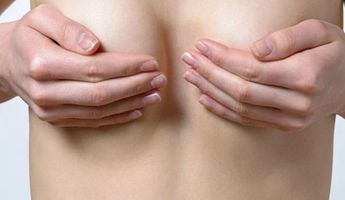
Find the best clinics for Male Breast Augmentation in Taiwan
No clinics available
Turkey offers the best prices Worldwide
Price: $ 2

- Home
- Taiwan
Compare Before & After Photos of _procedure_photos.phpMale Breast Augmentation
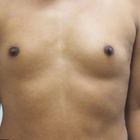
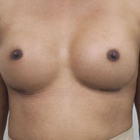
Front view
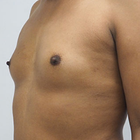
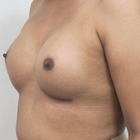
Front view


Front view
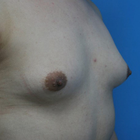
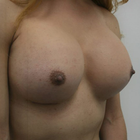
Half-side view
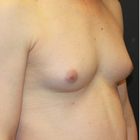
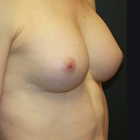
Half-side view
WHY US?
At Medijump, we're making medical easy. You can search, compare, discuss, and book your medical all in one place. We open the door to the best medical providers worldwide, saving you time and energy along the way, and it's all for FREE, no hidden fees, and no price markups guaranteed. So what are you waiting for?

Free

Best Price

Widest Selection

Risk-Free
What you need to know about Male Breast Augmentation in Taiwan
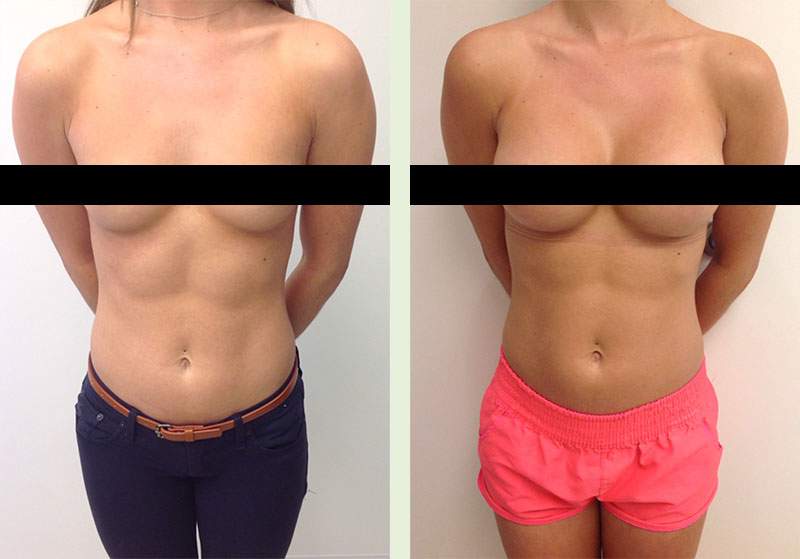
Male breast augmentation is a cosmetic procedure to enlarge the male’s breasts by inserting a breast implant. It is usually done on a male to female surgery to give patients contoured feminine breasts.
The procedure is also done to enhance the pectoral muscles on men whose chests do not seem to respond to exercise or men with Poland’s syndrome. The intervention is often preferred by individuals who wish for a chest that looks more chiseled and symbolizes masculinity. The usual method entails placing implants beneath the pectoral muscles.
What is the cost of Male Breast Augmentation in Taiwan?
The expense associated with Male Breast Augmentation within Taiwan fluctuates based on several variables such as the surgeon's level of skill, the intricacy of the operation, the kind of implants employed, and the physical location of the clinic. Therefore, it’s essential to converse in-depth with your medical provider to comprehensively comprehend the total expenditure related to the procedure.
Insurance plans generally don't cover Male Breast Augmentation; however, some medical facilities provide patient-friendly finance choices. It's vital to assess the pros and cons in correlation with your personal financial health strategies and determine how it aligns with your budget. Investing in your self-perception and physical appearance can potentially provide invaluable long-term benefits.
What Does the Procedure Involve?
Male breast augmentation is carried out under general anesthetic. Your surgeon starts by making an incision in an inconspicuous area, usually under the breast along the natural skin fold, to make sure the scar is unnoticeable. Then, they place the implant either under the chest muscles or behind the breast tissue. The implants can be made from silicone gel or saline, and the size is adjusted based on your preferences.
How Long Should I Stay in Taiwan for a Male Breast Augmentation Procedure?
The length of your stay in Taiwan after a Male Breast Augmentation is subject to certain variables. Generally, individuals are cautioned to remain in the vicinity for around a week or two following the surgery. This time frame accommodates the preliminary healing stage and facilitates the management of any immediate complications post-procedure.
In this time, your doctor will keep track of your recuperation process via planned follow-up visits. These check-ups serve as a vehicle to monitor the healing process, extract stitches, and check for any signs of infection or inherited issues. Adherence to this schedule of revisits is of utmost importance.
However, it is crucial to remember that everyone's healing experience is individual. Aspects such as age, overall physical wellness, and the degree of observance to the instructions given after the procedure can sway your recovery. Some people might necessitate an extended stay in Taiwan, particularly if they encounter any complications or if their recovery pace is slower than anticipated. Therefore, it's imperative to have a conversation about this with your surgeon, who can furnish a more precise timeline based on your particular circumstance, promoting a secure and effective recuperation.
What's the Recovery Time for Male Breast Augmentation Procedures in Taiwan?
You may feel uncomfortable for the first few days and your doctor will give you pain medication to manage the discomfort, so you may need to rest as much as possible during this period. The recovery period until you can go back to your normal routine (including intense exercise) may take about 4 to 6 weeks, but you should be able to return to work within 1 or 2 weeks.
Following the operation, it's fairly common for patients to feel some discomfort, along with swelling and bruising. These are standard postoperative signs that will slowly fade with time. Medical practitioners commonly prescribe pharmaceutical drugs to manage pain and to reduce bruising during this timeframe. Regular doctor visits for postoperative reviews are suggested to keep track of the healing process and promptly deal with any arising complications.
Furthermore, it's advised to avoid demanding activities such as heavy weight lifting and intense exercises for a minimum of four to six weeks after the treatment. This precaution ensures optimal healing of the chest area and minimizes the probability of post-surgical complications. Always remember, healing requires time and patience. Although resuming daily activities is important, giving your body the required time to fully recuperate from the operation is equally crucial.
What sort of Aftercare is Required for Male Breast Augmentation Procedures in Taiwan?
It is important to follow your surgeon’s post-operative instruction to avoid any complications and to make sure that the wounds will heal properly. Your surgeon’s instruction may include restrictions, diet, exercise, and wound care. Since some implants need to be replaced after about 10 years, make sure you attend regular checkups with your local doctor.
Keeping regular check-ins with your medical professional is essential to keep track of your recovery journey, modify your post-treatment care if required, and tackle any arising issues swiftly. The post-treatment regimen also consists of particular instructions related to physical movement and workout. Mild physical exercise might be recommended for better blood flow, but demanding activity or chest-focused exercises are generally not permitted for a specific amount of time.
What's the Success Rate of Male Breast Augmentation Procedures in Taiwan?
In general, the success rate of male breast augmentation is similar to female breast augmentation, which is around 90% to 98%. This is notably high.
The advancements in medical surgery technology, coupled with the proficiency of the medical experts, generally result in a noticeable enhancement in the physical aesthetics and self-assurance of the majority of males who opt for this procedure. Furthermore, due to the refined chest shape and muscle outline achieved, patients have reported a significant level of satisfaction.
However, akin to other medical interventions, the effectiveness of a Male Breast Augmentation is largely influenced by personal variables. These could comprise the overall wellbeing of the patient, the way their body reacts to the surgery, the surgeon's skill, and compliance with guidelines for care post-surgery.
Are there Alternatives to Male Breast Augmentation Procedures in Taiwan?
Surely, other choices exist for Male Breast Augmentation techniques in Taiwan. One such approach entails embarking on natural chest enhancement. This involves a regimen of chest workouts and a nutritional program aimed at boosting the bulk and power of the pectoral muscles. Though this pathway may be more time-consuming, it could provide a gradual, naturally appearing augmentation in chest size without the price tag and potential hazards tied to surgery.
Hormonal therapies present another viable alternative, particularly for transgender men. These therapies seek to encourage the formation of male secondary sexual traits, such as an uptick in muscle mass, body hair, and a more profound voice. However, it's crucial to consult a medical practitioner before beginning these therapies due to the potential side effects.
Lastly, some men might select a non-surgical technique like the injection of fillers or fat transfer to enhance the contour and fullness of the chest. However, these procedures yield temporary outcomes and may necessitate repeat procedures. It is advisable to consult with your surgeon about these alternatives.
What Should You Expect Before and After the Procedure
Before undergoing the Male Breast Augmentation, your healthcare professional will assess your medical history, carry out physical assessments, and converse about your cosmetic objectives to evaluate if you're fit for the procedure. Various diagnostic examinations may be necessary to ascertain your general health condition. Your surgical specialist will provide information about the impending procedure, discuss anticipated risks, and outline the probable result. Those who smoke will receive advice to stop several weeks prior to the procedure as nicotine may obstruct the healing process. Additionally, you might be instructed to adhere to specific dietary guidelines and discontinue certain medications.
Soon after the Male Breast Augmentation, it's common to experience some discomfort, inflammation, and bruising in the chest region. This usually decreases steadily over time. Over-the-counter drugs can be used to alleviate the discomfort. Typically, the use of a supportive compression garment is suggested to reduce swelling and aid the new chest shape during the recovery phase.
What are the Potential Risks of Male Breast Augmentation?
Although most patients are happy with the outcome of the surgery, it is important to be well-informed about the side effects and risks before you decide to have it, which are:
- Bleeding and infection
- Seroma
- Hematoma
- Asymmetry and dissatisfaction
- Implant shifting or displacement
- Numbness of the upper arm
- Unfavorable scarring
- Allergic reaction to the anesthesia.
Whilst the information presented here has been accurately sourced and verified by a medical professional for its accuracy, it is still advised to consult with your doctor before pursuing a medical treatment at one of the listed medical providers
No Time?
Tell us what you're looking for and we'll reachout to the top clinics all at once
Enquire Now

Popular Procedures in Taiwan
Price on Request

Prices Start From $692

Prices Start From $556

Prices Start From $2,473

Recommended Medical Centers in Taiwan for procedures similar to Male Breast Augmentation

- Interpreter services
- Translation service
- Religious facilities
- Medical records transfer
- Medical travel insurance
- Health insurance coordination
- TV in the room
- Safe in the room
- Phone in the room
- Private rooms for patients available

- Interpreter services
- Translation service
- Religious facilities
- Medical records transfer
- Medical travel insurance
- Health insurance coordination
- TV in the room
- Safe in the room
- Phone in the room
- Private rooms for patients available

- Interpreter services
- Translation service
- Religious facilities
- Medical records transfer
- Medical travel insurance
- Health insurance coordination
- TV in the room
- Safe in the room
- Phone in the room
- Private rooms for patients available

- Interpreter services
- Translation service
- Religious facilities
- Medical records transfer
- Medical travel insurance
- Health insurance coordination
- TV in the room
- Safe in the room
- Phone in the room
- Private rooms for patients available

- Interpreter services
- Translation service
- Religious facilities
- Medical records transfer
- Medical travel insurance
- Health insurance coordination
- TV in the room
- Safe in the room
- Phone in the room
- Private rooms for patients available
Male Breast Augmentation in and around Taiwan
About Taiwan
Whilst still a part of the Republic of China, the small island of Taiwan maintains a wealth of ancient Chinese culture and traditions mixed with modern-day Western inspirations. With its food-loving locals and award-winning whiskeys, Taiwan is a land of surprises. With 14 JCI accredited facilities in Taiwan, Taipei, the capital, is home to most, many of which are part of the University Hospitals and offer a range of specialist tertiary care. The country welcomes an ever-increasing number of medical tourists each year, many of which travel for Male Breast Augmentation procedures. Medical Tourists mostly travel from the mainland or from within the region.
Popular parts of Taiwan
Taiwan is one of the most densely populated countries in the world with 23.5 million inhabitants. The country has amazed tourists with its dynamic cities, vibrant culture, interesting history, and incredible natural scenery.
- Taipei is the capital of Taiwan. It is the financial, political, and cultural center of the country. The city is influenced by Chinese culture as well as Japanese, Southeast Asian, and American. There are many things to enjoy in this city, such as delicious food in Rahoe Night Market, enjoy a bird’s eye view of Taipei from Taipei 101 Observatory, visit the incredible Chiang Kai-shek Memorial Hall, and be inspired by the city’s many museums.
- Kaohsiung is Taiwan’s largest port. It’s an urban city that embraces its cultural venues. The most popular tourist destination is the Lotus Pond, a beautiful artificial lake filled with lotus plants and surrounded by temples. Tourists can also visit Pier-2 Art Center, see the Dome of Light, explore Cijin Island, or visit the Fo Guang Shan Monastery.
- Tainan, as the oldest city in Taiwan, has a fascinating culture and history. For historical sights, tourists can visit the Anping Fort, Anping Tree House, or learn Taiwanese embroidery. The city is now filled with quaint cafes tucked within the alleys.
- Hualien has breathtaking natural beauty. It’s the perfect place for tourists who want to get away from busy cosmopolitan cities. Visit the Eternal Spring Shrine, check out the popular Taroko Gorge, fall in love with Qingshui Cliffs, hike the Shakadang trail, and eat the amazing food.
- Taichung is a lively city located in the west-central part of the island. Taichung offers many unique things to see and do. National Taichung Theater will leave tourists in awe by its beautiful architecture. National Taiwan Museum of Fine Arts, Rainbow Village, Gomei Wetlands, Miyahara, and Fengjia Night Market are among the most popular tourist attractions.
Weather and Climate in Taiwan
- Spring starts in March and lasts until May. The average temperature is between 18°C and 24°C. Early rain showers and thunderstorms begin in this season. Heavy rainfall hit the island around mid-May.
- Summer can get extremely hot and humid with an average temperature of 27°C to 30°C. The season starts from June to August. Summer is also the wet season and typhoons are a real possibility especially in July and August. This is the peak season for tourism.
- Autumn has pleasant weather conditions. The rains decrease and the heat will drop. The season starts from September to November with an average temperature of 21°C to 27°C.
- Wintertime is from December to February and it is the coolest and driest season of the country. The average temperature drops to 16°C - 18°C.
Getting Around in Taiwan
Taiwan Taoyuan International Airport is the main airport in the country, located about 40km west of Taipei in the Dayuan District, Taoyuan. It is the hub for 6 airlines including two of Taiwan’s major airlines, China Airlines, and EVA Air. It has international connections with almost every country in the world. The airport serves major airlines as well as budget airlines such as Air Asia, Eastar Jet, Air Busan, and Tiger air Taiwan. There are other airports that serve international and domestic flights such as Taichung Airport, Tainan Airport, Siaogang Airport, and Taipei Songshan Airport.
Tourists arriving at Taiwan Taoyuan International Airport have a variety of transport options such as buses, taxis, car rentals, and Taoyuan Airport MRT. Buses are the cheapest option to get to the city center. Tourists who head towards the Taipei 101 area should take Bus no. 1960, while bus no. 1819 and 1961 will take tourists near Taipei Main Train Station.
Taxis are available in Terminal 1 and Terminal 2’ arrivals lobby. The fare is based on a meter and will usually cost around 1,200 TWD (40.50 USD). A journey to the city center takes about 50 minutes and taxis operate for 24 hours.
Taoyuan Airport MRT is the fastest way to reach Taipei’s city center. It will take tourists to Taipei Main Station in 35 minutes and costs 160 TWD (5.40 USD). The MRT operates from 6.05 am to 11.35 pm.
Tourists can travel around Taiwan by normal train (TRA). It is an affordable option; a train ride from Taipei to Kaohsiung costs around 845 TWD. Tourists who need a quicker travel time can opt for Taiwan High-Speed Train (HSR). The train travels from Taipei to Kaohsiung in just 90 minutes.
The cheapest way to travel around Taiwan is by bus. Buses are readily available and will reach small villages and mountain resorts. The country provides Taiwan Tourist Shuttle bus system that offers 42 routes to more than 100 tourist destinations.
Taxis and MRT is the best way to travel around big cities. In Kaohsiung, getting around in a bicycle is the best way to explore as it is one of the most bicycle-friendly cities in Taiwan.
Tourist Visas in Taiwan
Citizens of 65 countries do not require a visa to visit Taiwan and can stay for up to 90 days. Nationals of Turkey can obtain a visa on arrival valid for 30 days. It is best to check to the nearest embassy or consulate for visa requirements. Since January 2016, Taiwan offers an eVisa program for 18 countries including Saudi Arabia, Peru, Oman, and United Arab Emirates.
Additional Information
- Local Currency: The local currency is the New Taiwanese Dollar (TWD). 1 USD converts to 31.98 TWD.
- Money & Payments: ATMs are widely available except in villages. They’re usually located in convenience stores and banks. Credit cards are accepted in hotels and top-end restaurants. Always carry cash because small stalls and night market joints only accept cash. Tipping is not mandatory but is still appreciated.
- Local Language: The national language is Hakka, Mandarin, Taiwanese Hokkien, Matsu, Formosan languages, and sign language. English is common, especially in the tourism area. English is spoken more in Taipei.
- Local Culture and Religion: Taiwan has diverse religious beliefs. Buddhism and Taoism are two of the biggest religion in the country followed by Christianity, Yiguandao, Tiandism, Miledadao, Zailiism, and Xuanyuanism.
- Public Holidays: Taiwan celebrates Chinese New Year for a week in February. The country hosts several festivals such as Lantern Festival in February, Dragon Boat Festival in June, and Mid-Autumn Festival in September.
Popular Searches
- Plastic Surgery in Thailand
- Dental Implants in Thailand
- Hair Transplant in Thailand
- Breast Augmentation Thailand
- Gastric Sleeve in Thailand
- Gender Reassignment Surgery in Thailand
- Laser Hair Removal in Bangkok
- Botox in Bangkok
- Dermatology in Bangkok
- Breast Augmentation in Bangkok
- Coolsculpting in Bangkok
- Veneers in Turkey
- Hair Transplant in Turkey
- Rhinoplasty in Turkey
- Stem Cell Therapy in Mexico
- Rhinoplasty in Mexico
- Liposuction in Mexico
- Coolsculpting in Tijuana
- Rhinoplasty in Korea
- Scar Removal in Korea
- Gastric Sleeve in Turkey
- Bone Marrow Transplant in India
- Invisalign in Malaysia
- Plastic Surgery in the Dominican Republic
- Tummy Tuck in the Dominican Republic
- Plastic and Cosmetic Surgery in Poland
- Rhinoplasty in Poland
- Hair Implant in Poland
- Dental Implants in Poland
- IVF in Turkey